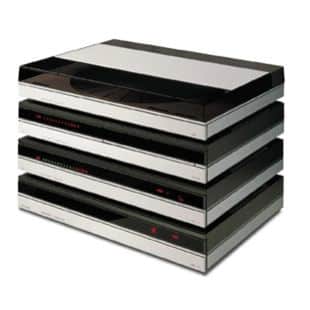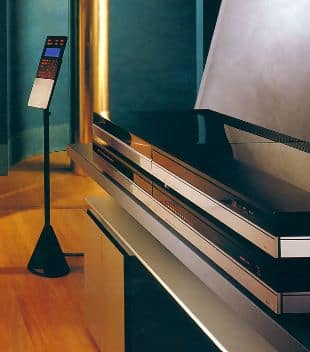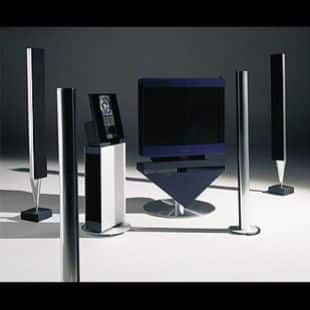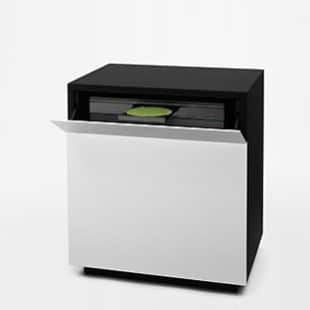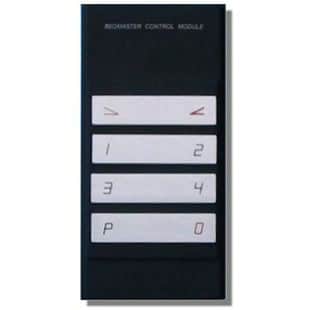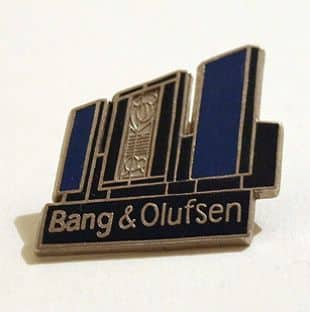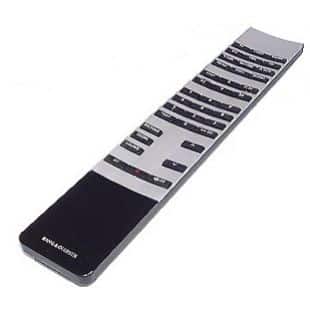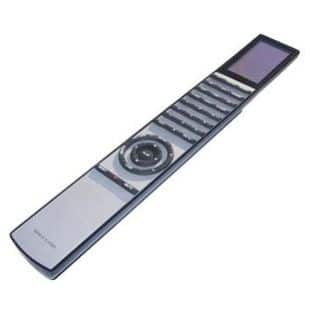Beomaster 7000
Beomaster 7000 was a combined amplifier and tuner. Among its functions were the pre-setting of up to 24 AM/FM programmes. If is is transmitted in RDS (Radio Data System) the name o the programme chosen was shown in the display on the Beolink 7000 remote control.
Beogram CD7000
The CD player, Beogram CD7000, was distinctive because of its authentic sound reproduction as well as its large dynamic range. It was equally suitable for symphonic music and rock. Its many functions allowed you to pre-programme tracks for playback in any desired order.
Beocord 7000
The order of the tracks could also be changed on the cassette recorder, Beocord 7000 and the system could also find a specific track on a tape. Other functions included Auto Reverse, Auto Record levels, Dolby B and C as well as Bang & Olufsen’s recording system HX-PRO, which ensures that the sensitive treble range is captured in recording.
Beogram 7000
Like all Bang & Olufsen turntables, Beogram 7000 was designed with a tangential arm, which ensured optimal playing of the record. It also came equipped with the patented OPP system (Optimal Pivot Point), so that the pick-up (MMC2) is not disturbed by vibrations.
Beosystem 7000 had access to ordinary, passive loudspeakers as well as Power Link connections for active loudspeakers. BeoLab Penta were recommended. There were connections for headphones, a microphone and extra cassette recorders. It could also be part of a larger AV setup, and via Beolink®, the system could serve several rooms with sound.
Beosystem 7000 Main Features:
Beosystem 7000 was the last modular Bang & Olufsen system that could be shaped to the user’s liking – in form and function. The system’s many combination and extension facilities made it an ideal choice for the discriminating user, to whom the combination of sophisticated technology, extensive operation facilities and superior design was a natural thing.
Beosystem 7000 was operated via the remote control Beolink 7000. The many features and functions in a Beosystem 7000 was closely reflected in its unique two-way interactive terminal, the key to all functions available in both Beosystem 7000 and throughout the (then current) Bang & Olufsen product range. The interactive principle of operation left nothing hidden and gave access to even the most complex operation in a convenient way. You were guided safely through the operation options in a dialogue with the Beolink 7000. It displayed only the information you needed – and all the information you needed – to make a choice and to proceed to the next operation step, until the goal of the operation was reached.
Beolink 7000 kept you informed and updated on all functions automatically and constantly, by means of an intensive infrared exchange of data with the system you were operating. Beolink 7000 was both a remote control panel and an operating guide with a superior human interface. A unique information displayed on Beolink 7000 within Beosystem 7000 was Radio Data System (RDS) information on FM radio stations. Both RDS information and a name programmed by the user was available to each radio station. The naming function applied to all radio stations, both AM and FM.
Beosystem 7000 was a very flexible system. You could combine the placement of the modules in different ways, you could select between two different coloured surfaces and you could purchase the sources of your choice. The basic system, with its four source modules, could be extended in numerous way. By connecting Beosystem 7000 to a Bang & Olufsen video system you could create a fully-fledged AV system: a Beolink system. The second Beolink feature, the ability of audio and AV distribution to other rooms in the home, was also available in Beosystem 7000 and the Beolink 7000 operated all functions in Beolink setups without restrictions, both with regard to a central AV room and in the local rooms.
Beosystem 7000 elements
The basic system consisted of four source modules and the Beolink 7000 remote operation panel. Beomaster 7000 was the audio master, where the infrared operation codes were received and processed and it contained an FM-AM radio, a preamplifier and power amplifier.
You could connect the other source modules of your choice to the Beomaster. One Beogram CD 7000, one or two Beocord 7000 cassette recorders and a Beogram 7000 could be connected simultaneously, with full two-way Datalink control. Bang & Olufsen recommended the active column loudspeaker BeoLab Penta for Beosystem 7000. In this way you could benefit from the unique Power Link connections, a line level connection with Datalink transfer of system information to the status display on the BeoLab Penta loudspeaker. Other types of loudspeakers could be connected; for example, any other BeoLab active loudspeakers or passive Beovox loudspeakers. Beomaster 7000 had connections for a Beolink AV system and sockets for a Local Control System, for the distribution of audio to other rooms in the home, with full control from these rooms.
Beosystem 7000 was delivered in three different surface versions. The anodisation process applied to the aluminium surfaces of Beosystem 7000 was beneficial in several ways. It hardened the aluminium surface considerably and made it highly resistant to physical damage such as scratching, and as the mirror finish and smooth surface without protrusions is easily cleaned, the beautiful appearance of the system should have been the same for many years. Anodised aluminium has been a Bang & Olufsen hallmark for many years, but as the mirror-finished anodisation is one of the most demanding metallurgic surface processes, Bang & Olufsen is the only manufacturer of audio and video equipment to use it. While the top surfaces were black anodised, the front was divided into two segments, with a lower extruded aluminium profile and an upper display segment in black glass. Beolink 7000 featured similar surfaces, with a lower section in mirror-finished aluminium and the operating section in black glass. The other available Beosystem 7000 surfaces also featured anodized aluminium plated surfaces, only they are white or black lacquered.
All the components in Beosystem 7000 exchanged information. Between the products this was via the two-way Datalink connection, and to and from Beolink 7000 it was via two-way infrared. As soon as you woke up the Beolink 7000 by a slight touch on the aluminium part, it started to receive information from Beomaster 7000 concerning the status of the system, which was then displayed. If the system was in stand-by, the upper level of operation was made available, with direct access to source selection. If the system was active, the present status was displayed and the operation available at this stage was presented to you.
A command issued by the Beolink terminal as a result of your operation was received by the audio master, where it was processed and relayed to the proper source, where the command was carried out. A confirmation was then send back to update the panel, both with regard to feedback and in order to change the appearance of the Beolink 7000 to the new situation in the system. An example of how the Beolink 7000 adapted to the previous operation was the difference in display readouts depending on the source you selected.
If you switched from one source to another, the first source was switched to pause before the second started playback. Beosystem 7000 also had a Control function, that allowed you to carry out a background job during playback of another source. For example, you could rewind a tape in the Beocord while you are listening to CD, or you could switch the Beogram off while you listened to tape.
Beolink 7000 always responded to the features available in the selected source, or to the features available in a specific operating situation. The exchange of data covered all operations to secure that you were always up-to-date with even the smallest details of the operating procedure. The display gave you both information as to your previous operation and prompted you to enter new data by displaying the available operating options. The interactive operation principle required the exchange of data in real-time, and this requirement was very hard to meet by the operating language used by a remote control. The Beolink data language was probably unique in this respect, being both very fast and very comprehensive and the time it took to transmit, process, carry out, receive the feedback and display it, was kept within strict limits to facilitate the instant dialogue necessary for interactive operation.
A condition for trouble-free operation of complex systems like Beosystem 7000 was that you were constantly kept updated with information on system status. Beolink 7000 was updated continuously and dynamically, and displayed all the information you needed to carry out an operation.
You had access to exhaustive information e.g. on the radio station you were receiving – frequency, name, mono/stereo and transmitter (if RDS was broadcast) were displayed. The value of the RDS information is obvious if you wanted to make a timer programming of a specific radio programme, while away from your system.
Beolink 7000 also responded to the different appearances of a Beosystem 7000, for example, if you had two tape recorders.
If you attempted to start a recording in a system with two recorders – and only then – Beolink 7000 requested you to point out the correct recorder – A.Tape 1 or A.Tape 2. Of course it also responded to the availability of sources. If no tape was inserted, or if the tape was protected, this was indicated in the display, as was the status on all other sources.
Timer operation and record operation was easy and convenient due to the exchange of data. Timer operation in Beosystem 7000 was very comprehensive. Thanks to the Datalink connection all audio sources were available for timer play and in a Beolink system all video sources as well. Timer play could be carried out in the central room and in rooms equipped with Local Control System. Timer play could be switched off in individual rooms, e.g. you can order your Beosystem 7000 to play radio programme no. 3 every morning, Monday through to Friday, in the sleeping room only – on the condition that the room was equipped with Local Control System. With one or more LC1 light controls you even had access to timer-operated light control, i.e. the switching on and off of lights, in the central room as well as in rooms equipped with a Local Control System. Even individual light settings (light pictures) could be programmed.
All sources in the source list were available for timer recording, so in a Beolink AV system you could for example, record a music programme broadcast via satellite (radio) directly on audio tape (and/or video tape), while you are out.
Ten programming blocks were available, all with a start and stop time. Timer programming could be executed once only, or on one or more days in the week. Timer operation was accessed via the red PROGRAM key on Beolink 7000. If you entered ‘illegal’ data, such as a nonexistent time, date or programme number, Beolink 7000 responded by displaying FILL IN AGAIN in order to let you correct the wrong data. Beolink 7000 gave access to check and edit of all timer programmings, and you could suspend the daily and weekly programmings for a period, or just skip the next execution of the programming, e.g. in case of a holiday.
Another function available via the PROGRAM key was the ‘Play next’ programming function, which allowed you to program a sequence of sources to be played back, the next source starting playback automatically as soon as the previously ran out. If you selected radio as one of the sources, this selection was automatically blocked for subsequent entries, as radio is broadcast continuously. Therefore RADIO will always be the last source in a ‘Play next’ sequence. ‘Play next’ could be combined with other programmings, e.g. sequence programming of CD and tape and timer play. By applying timer play programming you could also interrupt a ‘Play next’ sequence, or timer program the system to switch off at a given time (timer operation had priority).
Finally, the PROGRAM key gave access to set the clock and date via the blue CLOCK key.
In a record operation the signal was routed from the source via the Beomaster and to the Beocord. The whole operation was remote-operated and all you had to do was to select the source and start the recording. You could even start a recording from a Local Control System room. The signal routing was automatically carried out and at the same time a record lock function prohibited the signal route from being interrupted – you could not switch source or program number while a recording was in progress. This also applied to video sources in a Beolink AV system. Of course Beolink 7000 informed you that the record lock function was active by displaying the record menu – if you tried to carry out an operation which was prohibited.
The record operation was available as a red key when you selected a source. In this way Beolink 7000 always made sure that you selected the source when you wanted to record, i.e. that the operating sequence was carried out in the right order. When you activated RECORD, Beocord 7000 switched to record pause mode (also from stand-by), and by displaying a new menu it allowed you to change source or other record parameters, e.g. Dolby Noise Reduction, switching off the auto-reverse, or making the display change from readout of record level to track counter. Note that if the A.TAPE option had been left out in the source list programming, the RECORD operation was never displayed. If two recorders were available, Beolink 7000 asked you to point out the correct recorder before it switched the recorder to record pause.
The interaction was not only to the Beolink 7000terminal. Inside the system, the exchange of data meant that the Beocord 7000 automatically switched to record pause when the source stopped (e.g. the CD finished) and vice versa: when the tape ran out, the source you were recording from automatically went into pause. The laser on CD was parked in a pause position and the stylus of the Beogram lifted off the groove. In this way you always knew on which track the recording had stopped.
Beolink 7000 was identical to Beosystem 7000, in so far that all features available in the system were operated on Beolink 7000, and Beolink 7000 was required to gain access to all operation and information levels of Beosystem 7000. For example, RDS information was read out only on Beolink 7000. All Beolink terminals from 1988 onwards use the Beolink data format, so other Beolink terminals (for example, Beolink 1000) could be used for operation also. Operating Beosystem 7000 with other Beolink terminals was different from Beolink 7000 operation (i.e. not two-way), and you could not access all functions in the system with other terminals.
Some basic system functions were also available directly on the front of the system. This applied to stand-by, mute, switching sources on, switching on to the last source/radio station, next track on CD, and step between radio stations. Furthermore, all operation of a Beogram and Beocord could be carried out directly on the source or via the Beolink 7000 terminal.
Beosystem 7000 was extremely versatile and could be extended in many directions. Even when you extended the system, e.g. into a Beolink AV system, [A=/prod_details.asp?pid=697] Beolink 7000 7000[/A] took care of all operation and the case of operation inherent in the interactive design of Beolink 7000 was an even more striking benefit in extended systems.
Conclusion
Beosystem 7000 represented the latest and last refinement of a Bang & Olufsen classic system concept. Modular in construction, yet designed to be operated as if the modules were one single unit. Beosystem 7000 was of an outstanding quality, both with regard to style, placement, operation versatility, extension facilities, system and source features.
The unique Beolink 7000 adapted to the system in all its configurations and automatically gave you a total survey of operations available at any time. It guided you Beolink 7000 all operations no matter how complex they seemed to have appeared, in a safe and transparent way. Beolink 7000 equalled Beosystem 7000 and became its partner in the examination of the immense number of functions available, no matter if you used it in the same room as the system or in a room equipped with Local Control System.
